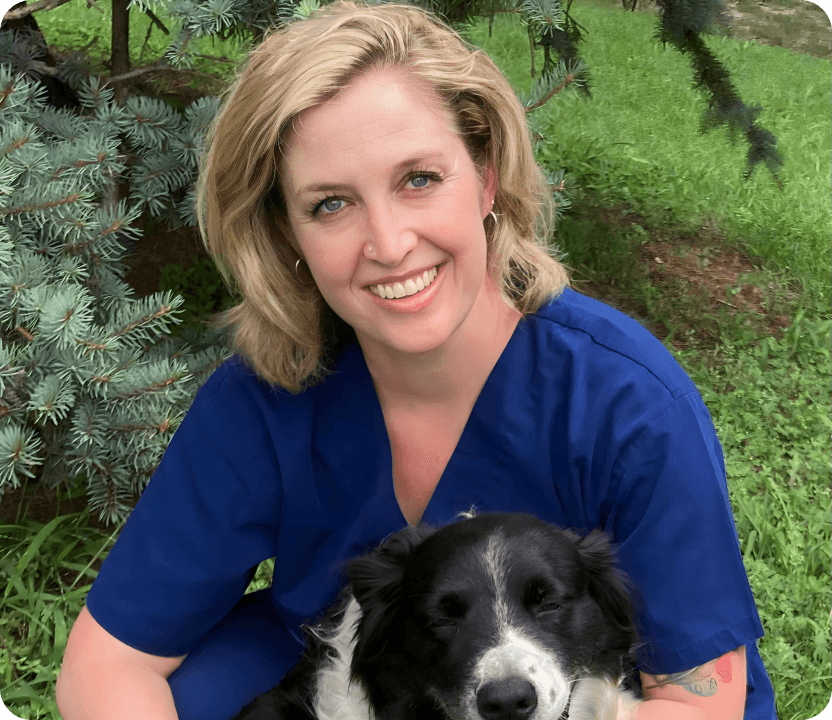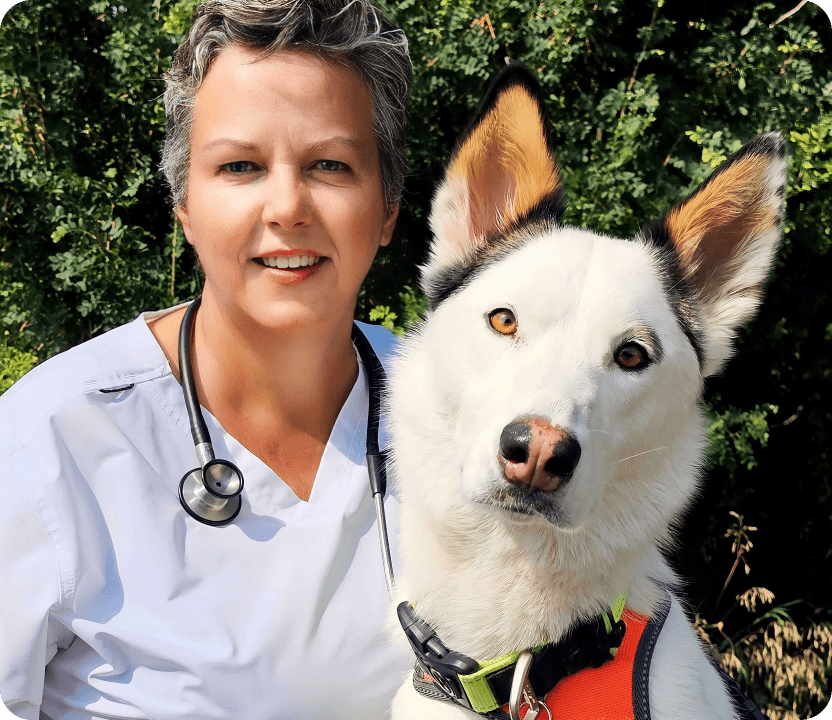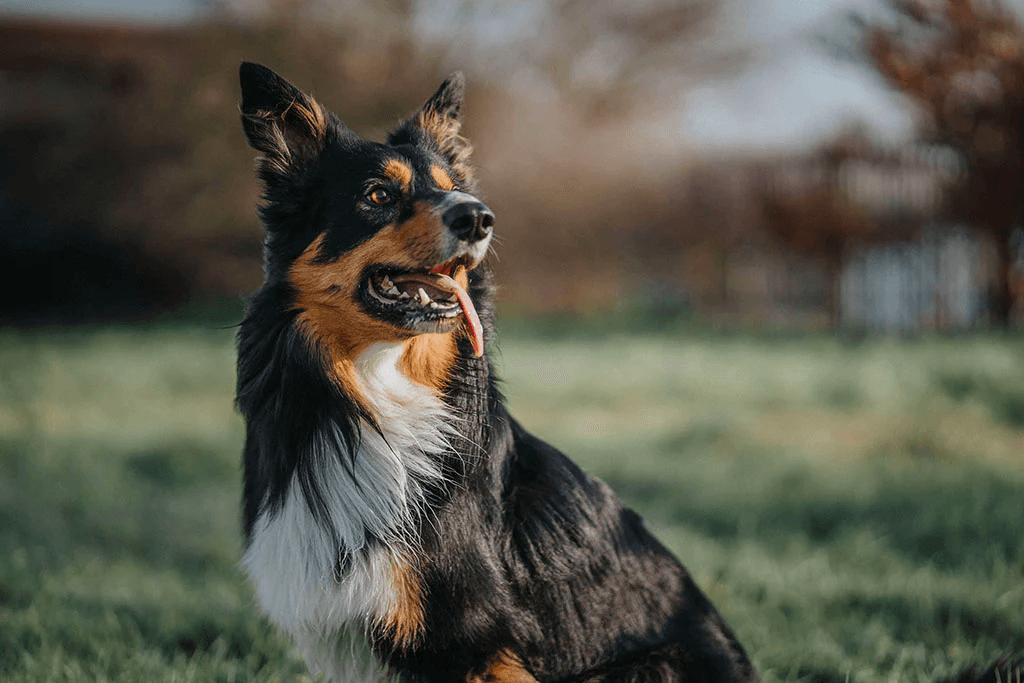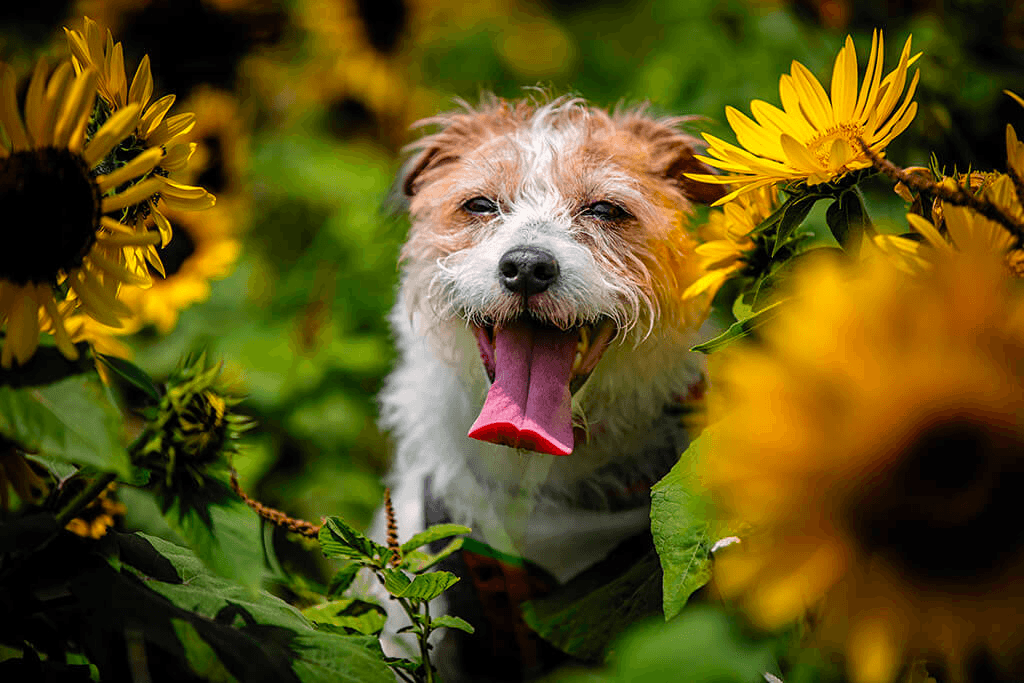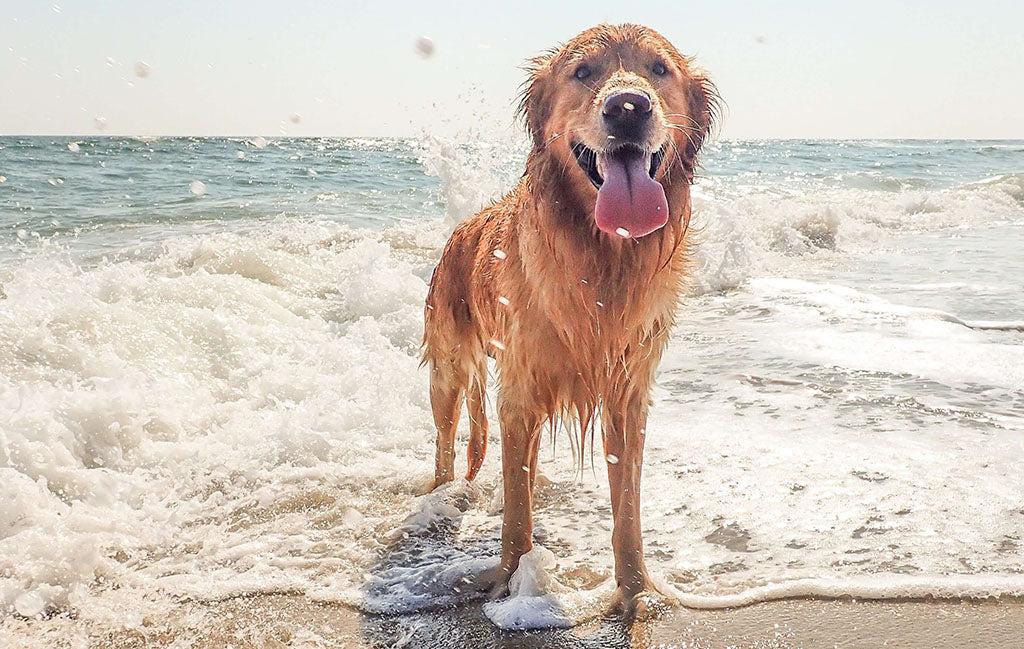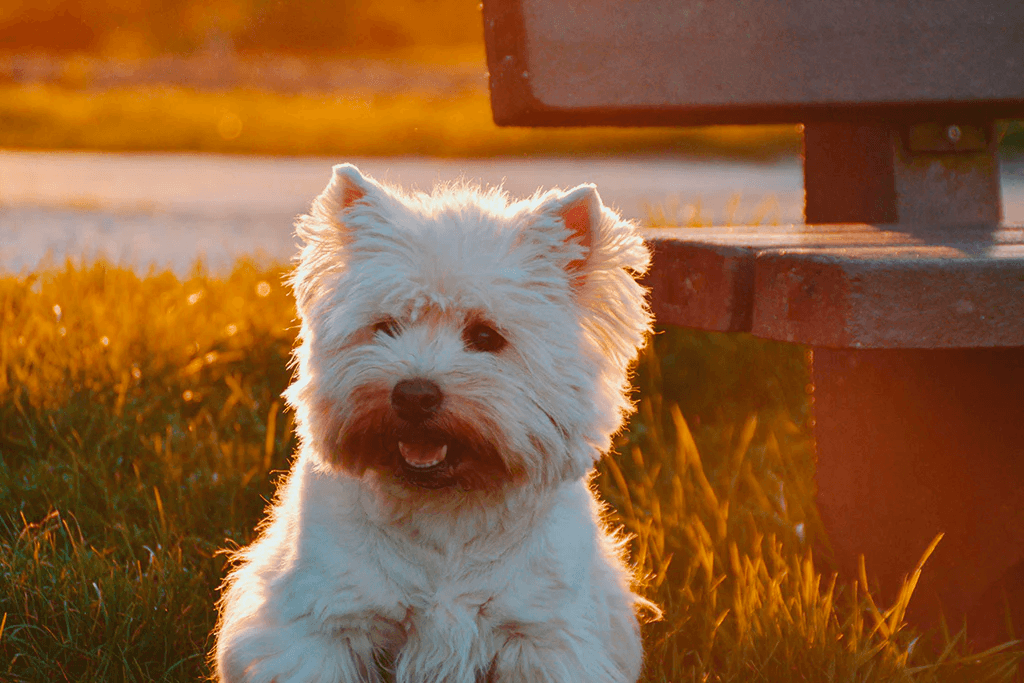Dive into the world of paw chewing in dogs. Discover the reasons behind why your pup is nibbling at their paws more than usual. From allergies to injury, our experts explore what could be triggering this ‘common’ behavior.
Is Your Dog Chewing Their Paws? Common Causes and Solutions
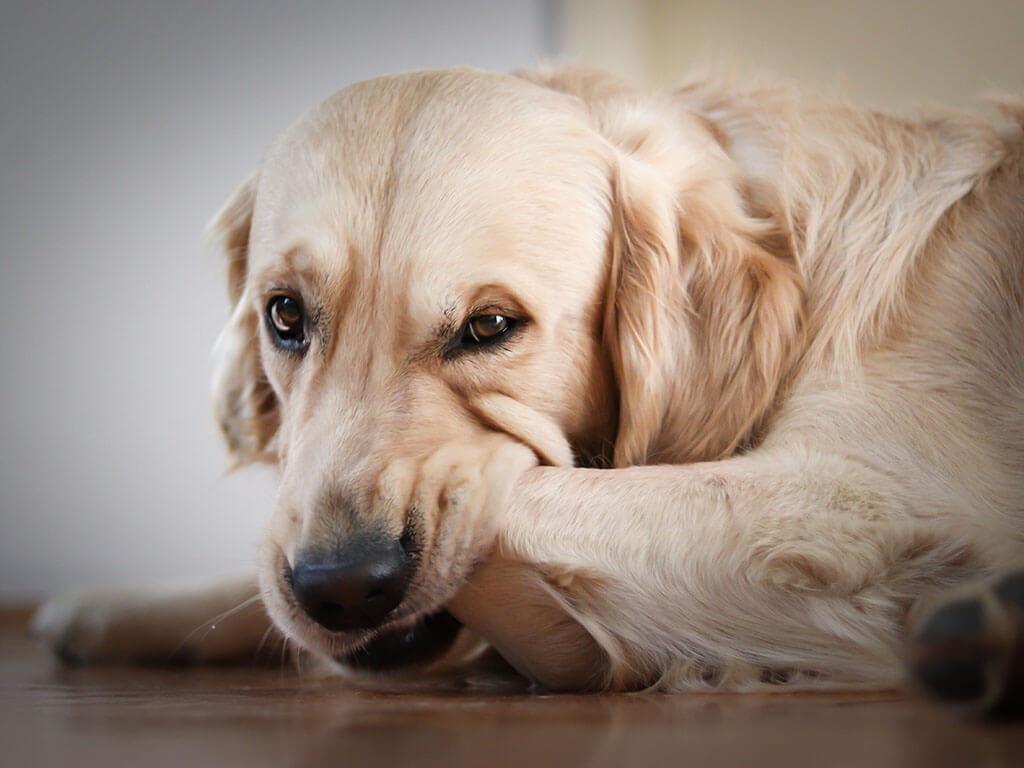
If you’ve ever rubbed a knotted muscle or scratched an itchy insect bite, you already have some insight into what drives your dog to chew their paws. Whether they’re trying to scratch an itch, distract themselves from discomfort, or even self-soothe, this behavior can quickly become a persistent problem.
Excessive paw chewing can cause trauma and secondary infections – so what should you do to stop your dog chewing on its paws?
In this article, we’ll review the conditions that might result in your dog chewing their paws, as well as some of the potential treatments.
Key facts:
- A small amount of paw chewing can be a normal dog grooming behavior.
- Allergies are one of the most common underlying causes of persistent paw chewing in dogs.
- Paw chewing caused by allergies can be effectively treated by a combination of medication, supplements, bathing, and home care.
- Other causes of paw chewing include infections, injuries, interdigital cysts, parasites, pain, and behavioral issues.
- Paw chewing frequently leads to secondary infections, so addressing the underlying cause is important.
- You should seek veterinary advice to make sure you are treating the problem correctly.
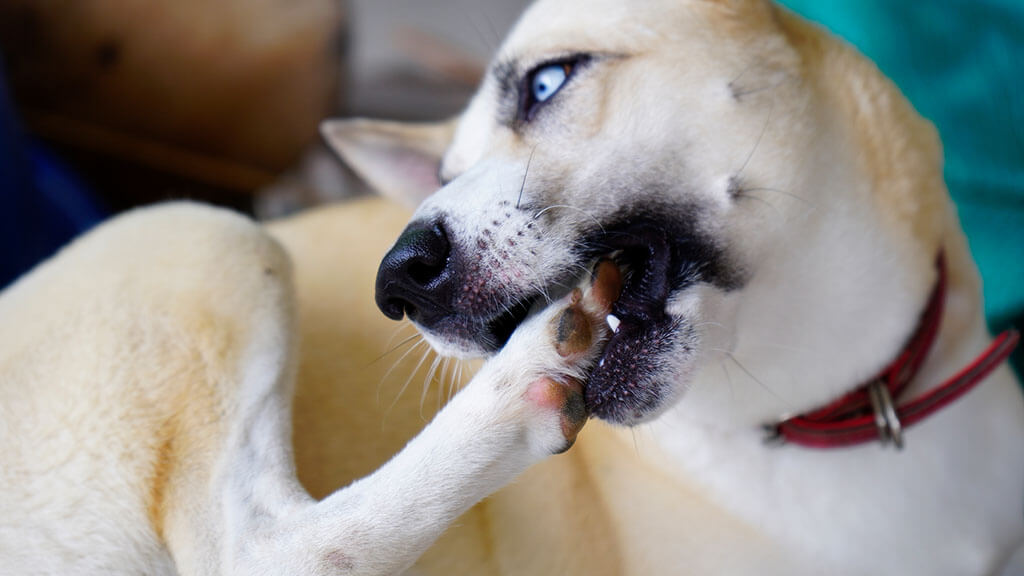
Why does your dog chew their paws?
If you’ve noticed this behavior, your first question is probably, “Why does my dog chew its paws?” While occasional chewing can be a normal part of grooming, there are several possible causes of more persistent chewing. Identifying the underlying cause of your dog’s chewing is vital for effective treatment.
If your dog’s chewing is more persistent, it’s best to try to treat it sooner rather than later. Chewing can become a learned behavior over time, continuing even when the original cause is gone.
First, pay attention to where your dog is chewing – are they targeting a single paw or chewing multiple paws?
A single paw is more likely to be affected by a localized skin infection, a foreign body like a grass seed, or an interdigital cyst. If your dog is chewing multiple paws, allergies are the most likely cause, although infections or parasites can also affect multiple paws.
Behavioral chewing is also more likely to affect multiple paws. Take note of whether your dog frequently shows other signs of anxiety, stress, or boredom, including destructive behavior, whining and distress when you leave, over-excitement when you return, pacing, and howling or barking.
Common causes of dogs chewing on paws
Allergies
Allergies are the most common cause of paw chewing. Allergies can affect only the paws or cause more widespread symptoms such as inflammation and infections of the ears, itchy skin across the belly and other areas, secondary skin infections, and anal gland problems.
Dogs may be allergic to environmental allergens, such as pollen and dust mites, dietary allergens like beef or chicken, or parasites such as fleas. The immune system overreacts to these things and triggers the release of inflammatory molecules, such as histamine in the skin, which causes the symptoms of allergies.
Dogs that chew their paws because of allergies often have other symptoms. For example, dogs with dietary allergies may also show gastrointestinal symptoms – but not always. If your dog’s paws are affected by allergies, the skin between their pads is likely to be more pink or red than normal, and you’ll often notice salivary staining of the surrounding fur.
Any dog can be affected by allergies. Environmental allergies, also known as atopy, most commonly appear between 6 months and 3-4 years of age. However, the symptoms may be subtle enough that they aren’t noticed until later in life. Dietary allergies can also appear later in life.
Infections & injuries
Infections and injuries can cause itching, discomfort, and pain which can trigger your dog to chew their paws. These include:
- Hot spots: these localized areas of bacterial skin infection cause redness, inflammation, and discharge, and frequently cause dogs to lick or chew.
- Nail bed infections: a sore, uncomfortable nail may trigger chewing to distract from the pain.
- Foreign bodies: objects such as grass seeds and thorns can puncture the skin and become trapped, causing irritation.
- Cuts and grazes: while your dog’s instinct is to clean any injuries, these can worsen rapidly if your dog chews and introduces infection.
- Insect bites and stings: these can cause inflammation and itching, but typically resolve quickly – as long as your dog doesn’t traumatize the area by chewing excessively.
- Yeast infections: Malassezia yeast overgrowth commonly affects the paws, often secondary to underlying allergies. Symptoms include a cheesy odor, redness, and flaky, greasy skin.
- Ringworm: this fungal skin infection can affect the paws, causing intense itching and focal, often circular areas of crusty, hairless skin.
- Other conditions: other conditions that cause pain, such as joint pain caused by arthritis or muscle pain caused by strains, can cause the dog to lick and chew in an attempt to relieve the pain.
Interdigital cysts
These small firm bumps between the toes most commonly affect the front feet. Various factors, including allergies, infections, paw conformation, and short, bristly hairs between the toes, can contribute to their formation.
These cysts usually appear red and inflamed and may ooze discharge or pus. In severe cases, they can cause lameness. They’re typically itchy and painful and dogs frequently chew in response to this, aggravating them further and contributing to secondary infections.
Parasites
Parasites are another common cause of itching and chewing. While parasites such as fleas tend to affect the body, mites can affect the paws. For example, Sarcoptes scabiei mites cause mange, an often intensely itchy skin condition that also causes hair loss, crusting, and scaling of the skin as well as secondary infections.
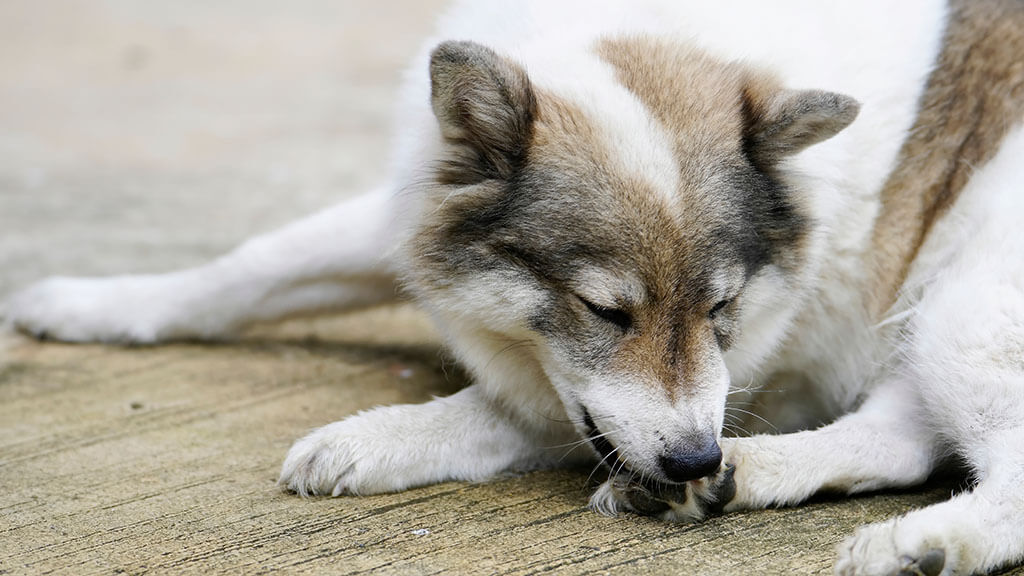
Behavioral problems
Paw chewing can become a compulsive behavior in dogs for a variety of behavioral reasons. Chewing can lead to the release of endorphins, that are natural chemicals produced by the body that are natural painkillers and mood enhancers.
The result is that the dogs self-soothe and distract themselves. This makes them more comfortable and relaxed, reinforcing the behavior in a vicious cycle.
Behavioral issues that can cause paw chewing include:
- Anxiety and stress: dogs can experience anxiety for a wide range of reasons. Compulsive behaviors like paw chewing can help these dogs to self-soothe.
- Boredom: some dogs show destructive behaviors in response to boredom, including paw chewing. Dogs with a high work drive are frequently prone to boredom if not given enough mental stimulation.
- Canine Compulsive Disorder: this mental disorder can cause dogs to obsessively perform a repetitive behavior like paw chewing, sometimes as a response to frustration, fear, or other negative experiences.
Why do we need to treat paw chewing?
If left untreated, paw chewing can become a behavioral issue – even if the original cause resolves. However, most dogs with paw chewing are doing so because of an underlying condition.
Not treating underlying allergies, infections, or other issues leaves dogs frustrated and uncomfortable – like having an itch you just can’t scratch. Many of the conditions above will also worsen over time without treatment, so it’s best to treat them sooner rather than later. Excessive paw chewing is also a common cause of inflammation, secondary bacterial and fungal infections, and lick granulomas (skin sores or ulcers caused by excessive licking of a specific area).
Diagnosis of dog paw chewing
Your veterinarian will often be able to provide a likely diagnosis based on your dog’s history and clinical signs. Many of the conditions above have a characteristic appearance on clinical examination. However, additional tests may be needed for a definitive diagnosis.
This includes skin scrapes and hair plucks for samples to assess under a microscope to rule out mites and fungal infections. Occasionally other tests like fungal cultures may be needed.
Sometimes, your veterinarian may suggest trying a treatment like pain relief to see if your dog’s symptoms improve.
Psychological causes of paw chewing can only be diagnosed after other causes have been excluded.
How to reduce your dog’s paw chewing
Most owners have one major question at this point: “How do I get my dog to stop chewing its paws?” The very first step is to identify the underlying cause.
Then, depending on the reason, there are various approaches you can take to reduce your dog’s paw-chewing behavior. The following are some of the things that you can do:
- Wiping or rinsing paws: removing pollen and other debris from your dog’s paws after walks can significantly reduce allergy symptoms.
- Oatmeal-based shampoos: soothing dog shampoos can help restore your dog’s protective skin barrier.
- Conditioning products: dog-specific conditioning treatments for use after bathing can help to treat dry, itchy skin.
- Changing diet: try switching to a strict hypoallergenic diet for an 8-week diet trial. If your dog’s allergy is dietary, avoiding the allergen responsible could resolve their symptoms.
- Household cleaning: dust mites and other allergens in the home can be reduced by thorough cleaning, especially of your dog’s bedding.
- Increased mental stimulation: consider using puzzle feeders, scent work, training, and play to get your dog’s brain working and avoid boredom and stress. More frequent or longer walks may also help.
- Reduce anxiety: address the underlying cause of any anxiety your dog experiences. For example, desensitization training for separation anxiety or providing a safe space for your dog to escape hectic environments.
- Supplements: omega-3 fatty acids have been shown to improve the skin barrier and reduce itching in allergic dogs. Probiotic supplements can also improve health conditions. For anxious dogs, calming supplements or diffusers may help.
- Seek veterinary advice: allergies and behavioral issues in dogs can be difficult to manage. Ask your veterinarian for advice or see a veterinary behaviorist for help with behavioral issues.
- Medications: discuss medication options with your veterinarian. There are various effective options available to help your dog.
Final words on paw chewing in dogs
Paw chewing can have a significant impact on quality of life – for both your dog and you. If you notice your dog constantly chewing their paws, it’s important to identify the underlying cause to provide effective treatment.
There are a number of different reasons why a dog might chew their paws. Allergies, parasites, skin infections, and boredom can all cause paw chewing. Excessive paw chewing can lead to serious issues, including secondary infections and lick granulomas.
If your dog is exhibiting signs of excessive or compulsive paw chewing, talk to your veterinarian about possible causes and solutions. If left untreated, paw chewing can become a learned and compulsive behavior.
Ensuring the well-being of your dog is of utmost importance. Taking prompt action to address concerns such as paw chewing will help ensure your dog has a lifetime of health and happiness.
Paw chewing FAQs
When do you need to see a vet?
If you notice your dog suddenly chewing one paw, it’s worth seeing a veterinarian as soon as possible. This behavior often indicates an injury, foreign body, or infection that needs treatment sooner rather than later.
If your dog’s paw chewing has developed more gradually, affects more than one paw, and doesn’t seem linked to any obvious injury or infection, you can try home care such as bathing their paws using oatmeal-based shampoo before seeing a veterinarian. If you don’t notice any improvement over a couple of weeks or you suspect your dog’s condition is more severe, you should see your veterinarian.
Why is my dog chewing other areas of skin?
Dogs that chew their paws may also chew or scratch other areas of their skin. Conditions such as allergies, skin infections, and parasites can affect the skin over a wider area.
Why is my dog chewing their paws a problem?
In addition to indicating an underlying problem such as infection, itching, pain, or stress, dogs chewing their paws are at high risk of developing secondary infections which can be intensely painful, progress rapidly, and require veterinary treatment.
Are some breeds more prone to paw chewing?
Paw chewing itself is a symptom rather than a specific condition, but certain breeds are more prone to allergies. These include Golden Retrievers, Labradors, German Shepherds, West Highland White Terriers, and French Bulldogs, among others.
Sources:
Bowen, J., & Heath, S. (2007). Behaviour problems in small animals: Practical advice for the veterinary team. Elsevier Saunders.
H. Jackson; R. Marsella (Eds.) (2012), BSAVA Manual of Canine and Feline Dermatology (3rd ed., pp. 130–151). British Small Animal Veterinary Association.
Kim, H., Rather, I. A., Kim, H., Kim, S., Kim, T., Jang, J., Seo, J., Lim, J., & Park, Y. H. (2015). A Double-Blind, Placebo Controlled-Trial of a Probiotic Strain Lactobacillus sakei Probio-65 for the Prevention of Canine Atopic Dermatitis. Journal of microbiology and biotechnology, 25(11), 1966–1969. https://doi.org/10.4014/jmb.1506.06065
Mueller, R. S., Fieseler, K. V., Fettman, M. J., Zabel, S., Rosychuk, R. A., Ogilvie, G. K., & Greenwalt, T. L. (2004). Effect of omega-3 fatty acids on canine atopic dermatitis. The Journal of small animal practice, 45(6), 293–297. https://doi.org/10.1111/j.1748-5827.2004.tb00238.x
Outerbridge, C. A., & Jordan, T. J. M. (2021). Current Knowledge on Canine Atopic Dermatitis: Pathogenesis and Treatment. Advances in small animal care, 2, 101–115. https://doi.org/10.1016/j.yasa.2021.07.004
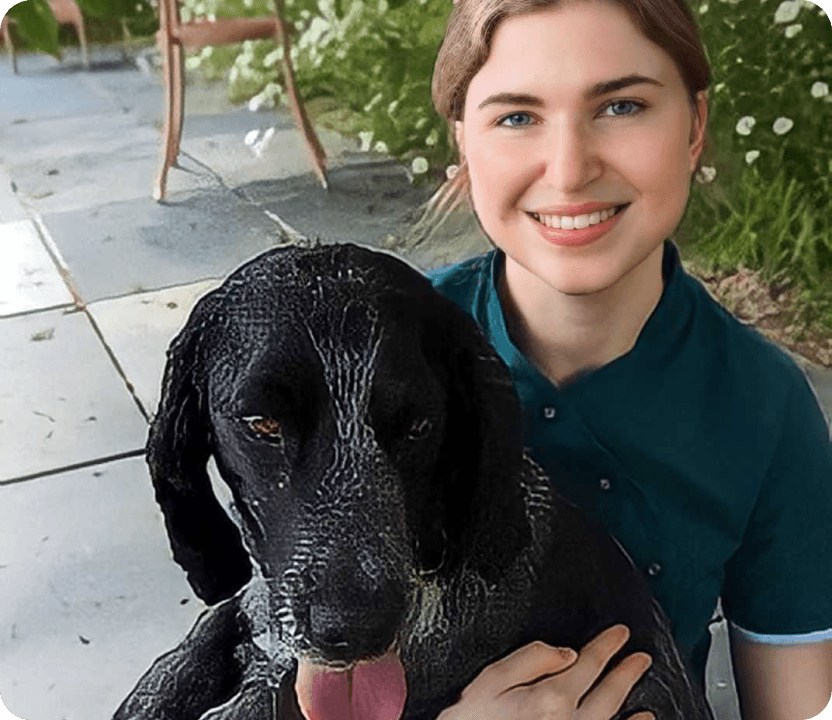 P
P